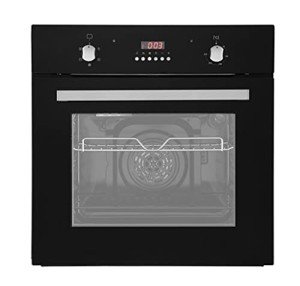The Rise of Built-In Ovens: A Seamless Approach to Modern Cooking
In modern kitchens, where style aesthetics mix effortlessly with performance, one home appliance sticks out as a real game changer: the built-in oven. As property owners and chefs alike continue to seek ingenious solutions that improve their cooking experience, built-in ovens have actually ended up being increasingly popular. This short article checks out the advantages, factors to consider, and trends surrounding built-in ovens, highlighting why they are an important function in modern-day cooking areas.
What is a Built-In Oven?
A built-in oven is a kitchen area home appliance created to be integrated into the cabinetry of a cooking area rather than standing alone. Unlike traditional freestanding ovens, which can be moved and placed anywhere, built-in ovens come in numerous styles and sizes to fit specifically within designated spaces. intergrated oven in single or double configurations, these ovens use a streamlined appearance that matches contemporary cooking area designs.
Advantages of Built-In Ovens
1. Space-Saving Design
One of the most attractive advantages of built-in ovens is their space-saving design. By integrating the oven into cabinets, you can free up important counter and floor area. This is particularly useful in smaller kitchen areas, where optimizing space is necessary. Built-in ovens can be installed at eye level, making them more accessible and reducing the requirement to bend down.
2. Visual Appeal
Built-in ovens add to a streamlined and cohesive kitchen area style. Available in different surfaces-- such as stainless-steel, black, white, and custom-made cabinets-- they can mix effortlessly into the total design. This visual appeal improves the cooking area's visual harmony and elevates the space, developing a modern-day and sophisticated environment.

3. Enhanced Functionality
Lots of built-in ovens come equipped with advanced cooking technologies, such as convection cooking, steam ovens, and clever functions. These enhancements permit versatile cooking options, making it simpler to attain professional-level results in the house. Smart built-in ovens can even connect to Wi-Fi, making it possible for users to manage the oven from another location, receive notices, and access a range of cooking programs and recipes.
4. Enhanced Ventilation
Because built-in ovens can be integrated with cooking area hoods and ventilation systems, they can assist preserve much better air quality and reduce cooking smells. This is especially significant for those who like to prepare with aromatic spices and ingredients, as a reliable ventilation system can keep the kitchen area comfy and welcoming.
5. Customization Options
Built-in ovens offer a large range of customization alternatives to suit private cooking designs and requirements. From professional-grade home appliances with numerous cooking modes to compact designs for smaller sized kitchen areas, house owners can pick the oven that fits their particular requirements. Lots of makers also offer adjustable front panels, enabling you to match the oven's look to your kitchen cabinetry for a really unified look.
Considerations When Choosing a Built-In Oven
While built-in ovens have many benefits, there are essential factors to consider to bear in mind before purchasing:
1. Cost
Built-in ovens usually feature a greater price than their freestanding counterparts due to their style and setup requirements. It's essential to element in both the expense of the oven and any additional costs related to cabinetry adjustments or installation.
2. Installation Requirements
Setting up a built-in oven often requires professional support, especially if you require to modify existing kitchen cabinetry. Guarantee that you think about any expenses associated with installation, consisting of labor and possible kitchen cabinetry adjustments.
3. Size and Dimensions
Before purchasing a built-in oven, measure the designated area accurately to make sure a correct fit. Built-in ovens come in different sizes and setups, so selecting one that aligns with your needs and kitchen design is essential.
4. Way of life and Usage
Consider your cooking habits and requires when choosing a built-in oven. If you regularly host big events, a double oven may be more beneficial. On the other hand, if you have a compact cooking area, a single-wall oven might suffice.
Trends in Built-In Ovens
The cooking area home appliance market is constantly evolving, and built-in ovens are not exempt from emerging trends. Some present trends consist of:
Smart Technology Integration: With the increase of smart home technology, built-in ovens now typically include connection alternatives. This permits users to monitor cooking progress and change settings by means of mobile apps.
Energy Efficiency: As sustainability ends up being a priority, many makers are investing in energy-efficient built-in ovens that decrease energy intake while preserving performance.
Multi-functional Designs: Built-in ovens now use features such as air frying, slow cooking, and steaming, providing flexibility that fulfills a wide variety of cooking techniques.
Conclusion
Built-in ovens unquestionably represent an ideal mix of design, function, and convenience in today's cooking areas. As more house owners choose this contemporary service, the focus shifts to developing a cooking area that is as visually pleasing as it is practical. Whether you are constructing a brand-new home or redesigning your kitchen, considering a built-in oven might elevate your culinary experience and transform your cooking area into a trendy and functional haven. With a variety of options readily available and continuous developments in technology, built-in ovens remain a standout option for both amateur cooks and culinary enthusiasts alike.
